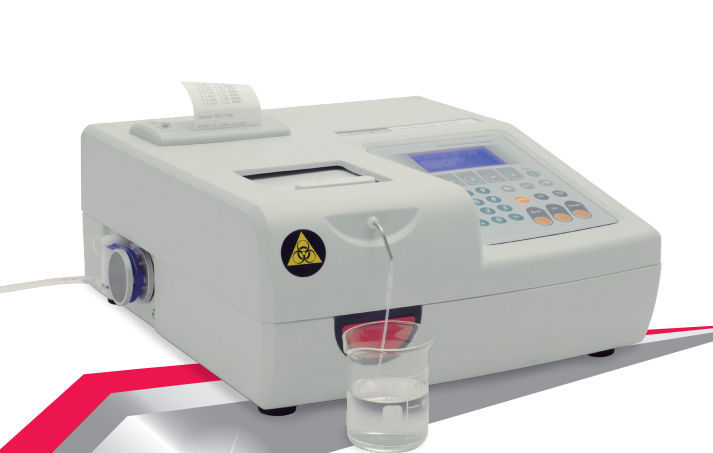About Metrolab
The Metrolab 1600 DR is a compact and easy-to-use semi-automated chemical analyzer that is offered by the U.V. Vis Metrolab, Argentine. The operating center incorporates a superior, temperature-controlled optical design with the measurement taking place in a specialized flow cell. The unit is easy to operate and its maintenance requirements are low. Most technicians can learn to use this software-driven device within an hour. The maintenance instructions are incorporated into the system software. Test results are stored in memory and are easily retrievable. A bi-directional connection feature enables the analyzer to download parameters and settings from a host computer and upload patient information to a data management system. The analyzer features a full screen, an integrated keyboard, and 60 programmable tests.

Metrolab 1600 DR
This device counts with a built-in printer and an innovative system that makes it possible to work with a thermostated micro flow cell or macro and semi-micro cuvettes. The cuvettes for measurement can be used instead of the micro flow cell for those potentially contaminating reagents (e.g. creatinine).It is capable of storing 132 open techniques and 30 calibration curves. It covers all the determinations carried in a routine laboratory.
- Whith innovative “stand by system” and automatic turn off allow its electronics parts to last longer.
- Open system. Suggested applications for the most usual reagents.
Optics
- Halogen quartz lamp 6V-10W.
- Range: -0.5 – 3.5 Abs.
- 9 Interference filters positions: 340, 405, 450,505, 550, 580 and 620 nm.
- 2 free positions available.
Detection System
- Photodiode 320-1000 nm.
Aspiration system
- Peristaltic pump driven by stepper motor.
- Programmable volume up to 500 ul.
- Carry over <2% for volume > 400ul.
- Automatic cleaning cycle.
Temperature control
- Adjustable to 25°C, 30°C and 37°C. Stability +/- 0.1°C.
- End point with sample or reagent blank.
- Kinetics.
- Two points Kinetics.
- Mono and bichromatic measurements.
- Reaction graphics.
- Linearity checks
- Standard or Factor.
- Factor storage in all methods.
- Nonlinear curve fitting. Up to 10 standard points.
- Automatic adjustment.
